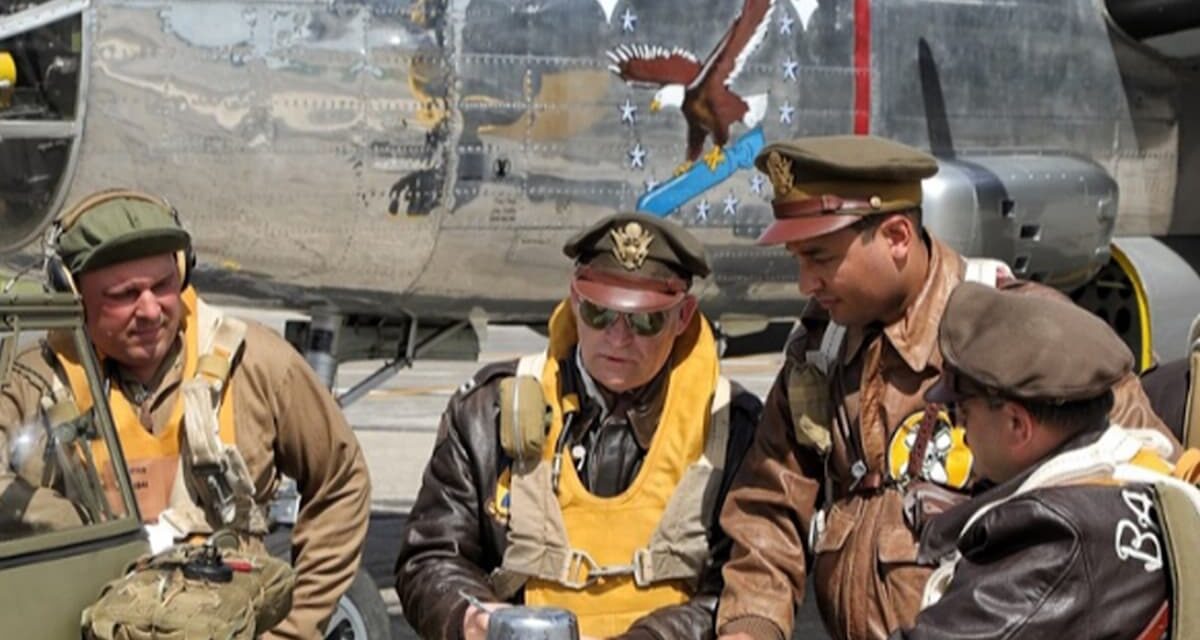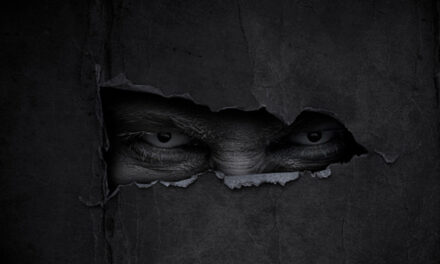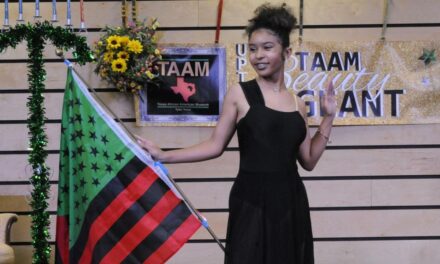
Who hasn’t paused to look up when a star-marked P-51 Mustang pulls up from a screaming dive at an air show? And who hasn’t pondered the mechanical marvels of a polished aluminum B-25 Mitchell bomber parked on the ramp, complete with dummy guns and bombs?
As immersive as that can feel, it’s only the warm-up for some people who attend air shows in full uniform: Wartime re-enactors.
At many air shows, re-enactors set up camps that transport them — and others — back in time.
It’s been going on at EAA AirVenture Oshkosh for the past 28 years. That’s when the Warbirds Living History Group started with just two uniformed re-enactors, according to founder Kevin Wisniewski.
Today, there are hundreds of folks participating in the 340th Bomb Group encampment at the Warbirds campus of AirVenture, which features war-time tents, jeeps, bikes, and personal gear, all animated by re-enactors with a sense of panache.
A popular warm-up to a session of Warbirds in Review is the presence of appropriately garbed re-enactors alongside a famous warplane, with the enactors’ flight gear described over the PA system. Warbirds in Review has its own piece of ramp, with bleachers, where crowds sometimes as large as a thousand gather to learn about the warplanes and people of bygone eras.
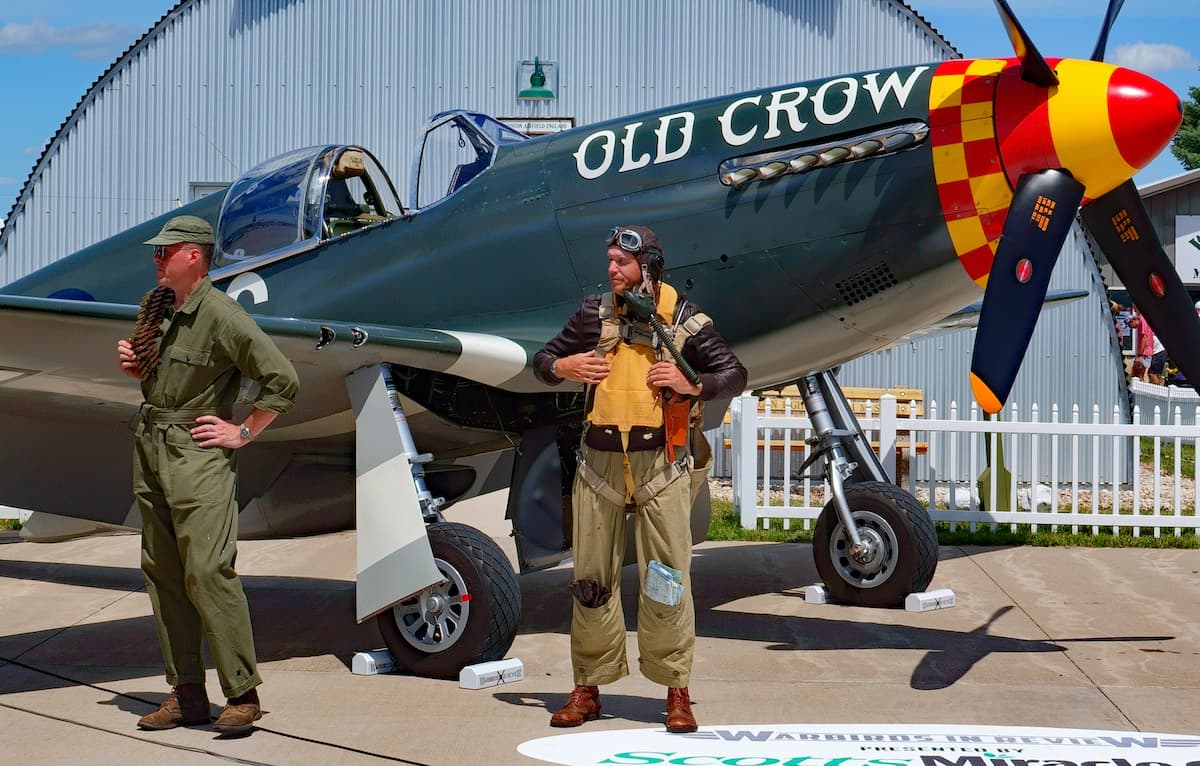
During EAA AirVenture 2022 I took a vintage Bell and Howell 16-millimeter movie camera and assembled a replicated civilian war correspondent’s uniform, then embedded myself with the 340th Bomb Group re-enactor’s encampment. I indulged a long-standing respect for war correspondents that goes back to a biography of Ernie Pyle I read in the seventh grade.

I arrived in camp just as several re-enactors were staking a rope around a sinister-looking set of bomb tailfins protruding from the earth, looking like an unexploded remnant of a recent Axis raid.
The camp morning begins with a briefing, mail call, and time hack in a dark olive canvas army tent dimly illuminated with a string of bare-bulb lights. It’s a congenial sort of informational meeting, but if your character is a bit out of uniform, expect at least a tongue-in-cheek upbraiding by the camp commander, Lt. Col. Kevin J. Wisniewski.
The camaraderie is palpable. Everyone is here by choice, paying respect to the veterans of World War II. There is a sense of mission, to portray wartime life as realistically as possible for the thousands of AirVenture visitors.
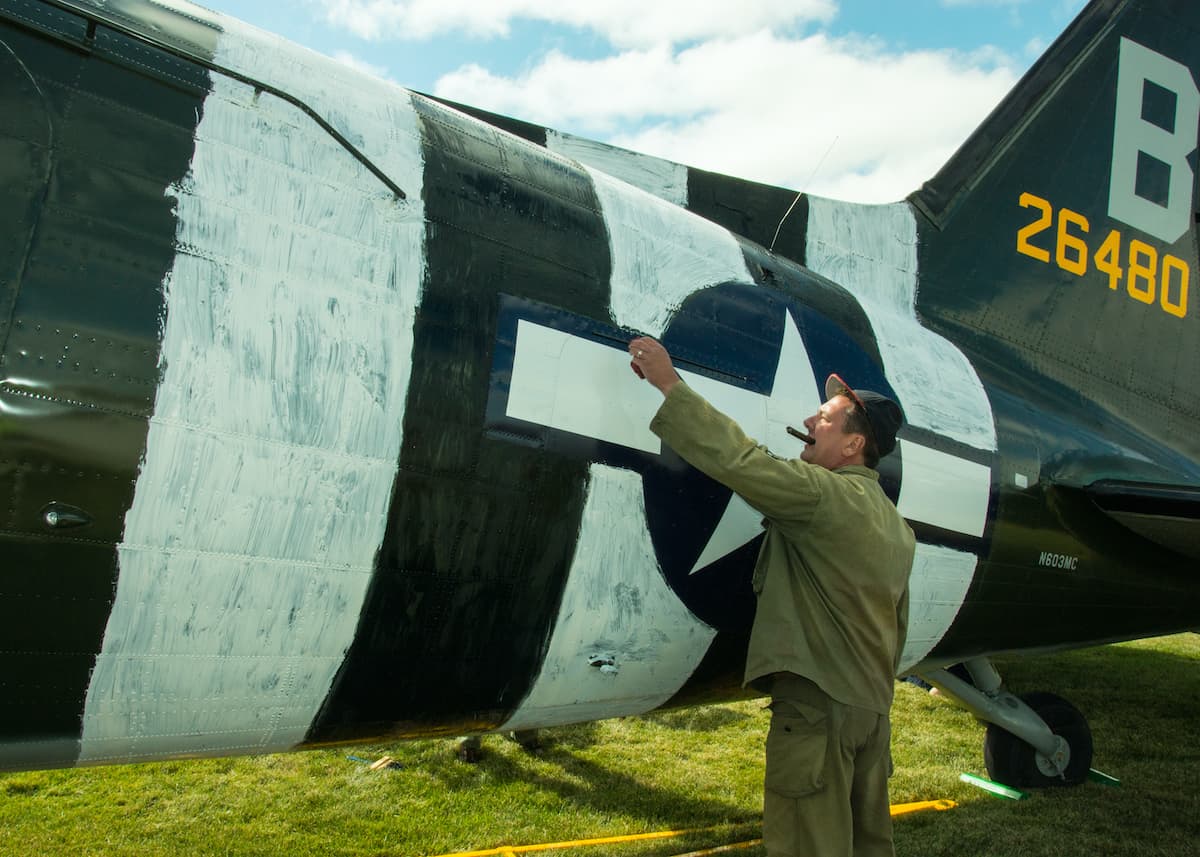
It’s a very welcoming group. Participants range from teenagers to silver-haired re-enactors who grew up listening to parents and other adults talk about what they did in the war. If the median age of the AirVenture re-enactors is skewed upward a bit from the wartime reality, that is at least partly overcome by the earnest and heartfelt thespian talents, and years of knowledge, of those involved.
And it’s not just a men’s club. Women have made some iconic tableaus recreating famous photos of WASPs, the women who flew Army Air Forces aircraft. And Rosie the Riveter makes appearances with the prized warbirds. Other women dress as Army nurses or USO girls, according to Wisniewski.
The World War II camp is a wilderness of vintage woolen and cotton uniforms in a sea of modern synthetics as visitors stroll through, wearing what folks wear to air shows in the 21st Century.
The notion of my vintage movie camera that has the weight of a small boat anchor is something to behold for a generation who only know digital media and smart phones.
And that points up a salient difference in World War II and its distribution of news film and photos, compared with the global instantaneous full-color capabilities of today. Perhaps that realization makes the film from the 1940s even more precious.
I made a black-and-white newsreel, complete with a patriotic introduction, based on my time spent with the re-enactors at Oshkosh.
And, yes, I confess to attaching a micro video camera to the side of my vintage motion picture rig. I just didn’t have the time or resources to find, buy, and shoot 16-millimeter motion picture film, find a lab to process it, edit and splice it into a newsreel, digitize the film, import it into a non-linear video editing program, and create a YouTube-ready video product.
As grateful as I am for the men and women who won World War II, I’m also appreciative of the technological advancements we take for granted today.
Like so much of general aviation today, many of those active in the Warbirds Living History group are aging.
“To keep what we have built going, we need new blood eventually to carry on,” says Wisniewski.
Younger volunteers also will lend more reality to the camps, with re-enactors nearer the age of those who served during World War II, he noted.
“We’d like re-enactors who look more the part, representing those brave young men from World War II,” he says.

But if my experience is a guide, they will still welcome, let’s say, “mature” re-enactors with open arms.
If you’d like to learn more about how to become a re-enactor, you can contact Wisniewski at bomax17@sbcglobal for information and an application form.

